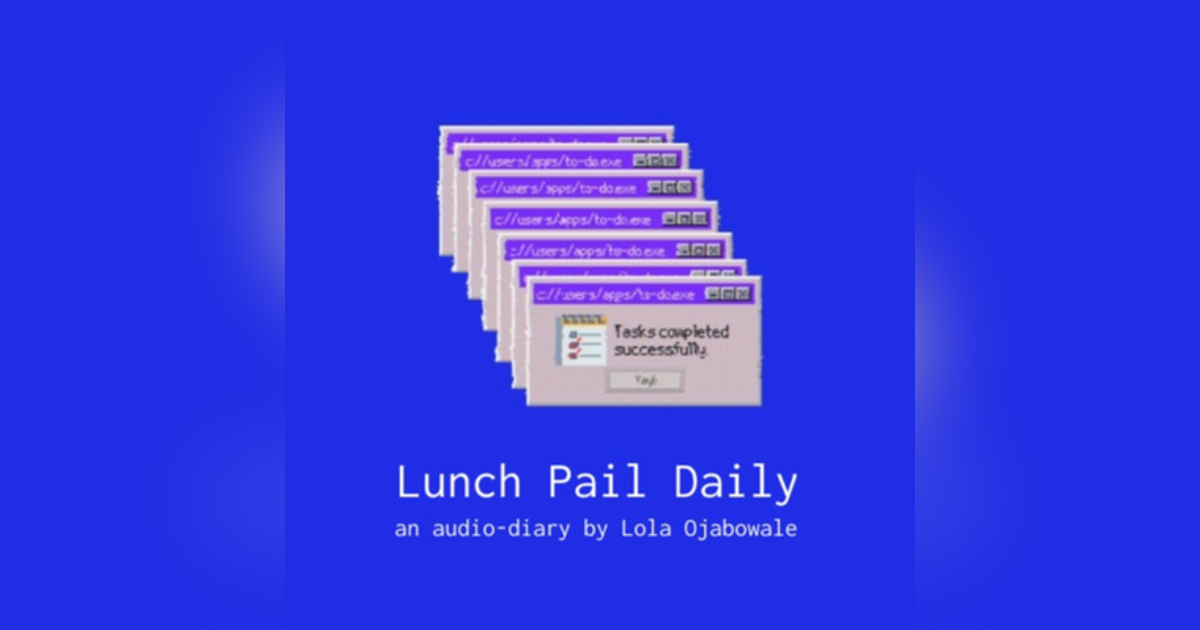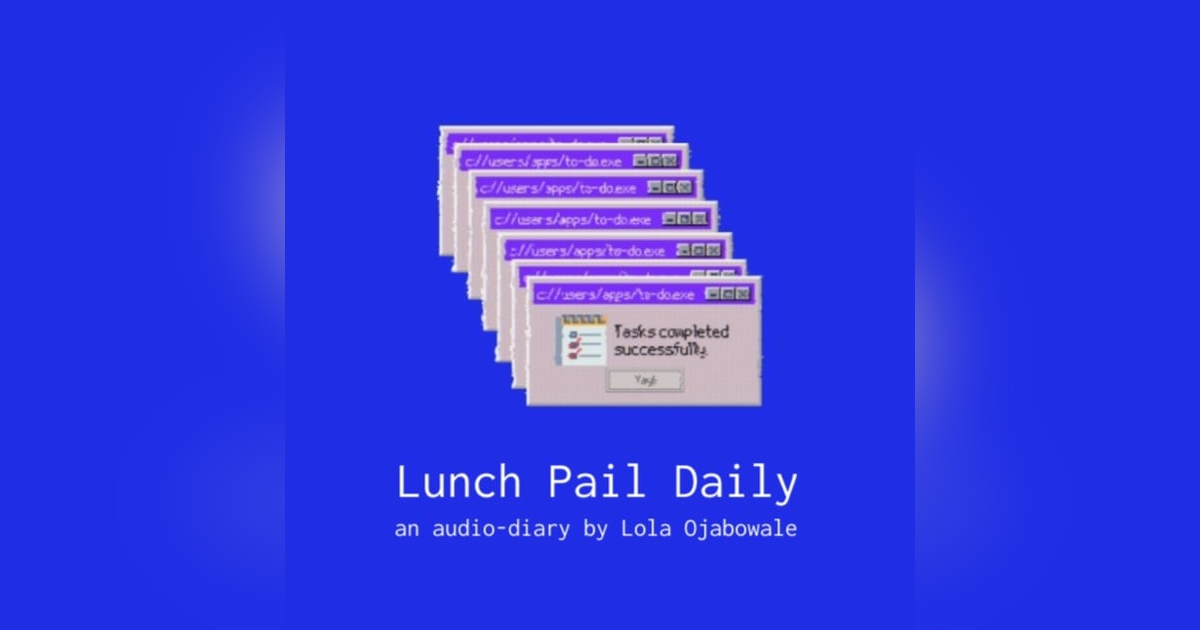#167 — 💧☠️ Liquid Death and 3 stages of product

I read an article yesterday on how a water brand for partygoers called Liquid Death just raised $73 million 🤯. It got me thinking about all the upstarts that generate serious revenues with style and identity. I've talked about this idea previously and. I also think product categories go through three main stages before arriving at a place where it makes sense for style and that's when most of the solutions on the market are generally sufficiently good. Jamming on all of those ideas in this episode.
I also published this episode as an atomic essay which you can check out here.
0:09
What's up everybody? This is Lola Ojabowale, founder of Lunch Pail Labs. Welcome back to Lunch Pail Daily, my personal audio diary where I share all of the real real on building and growing Lunch Pail Labs, which is a digital product studio based out of Atlanta, Georgia. And today's episode wanted to jam about this company called Liquid death. And what I'm saying are like the three stages of products. So, background, I read an article yesterday, I'll link it on how a water brand for partygoers called Liquid death just raised $73 million I'd actually noticed the the liquid death brand in like seven elevens and stuff and like stores a while ago and was originally so confused because it actually looks like a beer brand. And it also just the fact that they've raised so much money. They've also I think generated over $50 million in revenue last year. It got me thinking about all of these upstarts that generate serious revenues by really leveraging style and identity.
1:24
And I've talked about this idea a little bit on my podcast, and also about like, products and services with style. I think that was like a previous episode that I linked and wanted to take this opportunity here to think through just really general my thoughts on like, product product categories, and like three main stages, I think they go through and sort of arrive at where a categories solution is well understood and the options in the market are sufficiently good, and how we'll see more companies like liquid death.
2:01
So getting started. What's the first stage Think stage one in a category is it's like the bare solution to the core problem. And this stage, the product that emerges finally solves the core problem. It's massively more effective than its predecessor. Examples of companies or products that were in this stage, you know, the light bulb versus the candles, lightbulbs electricity, massively more effective at solving the problem of lighting than candles. Printing Press, massively more effective at creating and distributing books then like handwriting and sort of the manual way that they used to do things, the telephone, massively more effective than telegram or however, they are courier pigeon, and sort of communicating with others. And in this stage, I think it's really defined as a core problem or predecessor was so ineffectively solved that really all these products in these in these categories and this stage, all they need to do is show up and solve the problem in some way.
3:15
In this next stage, there are solutions that solve and I call it like the better, faster, cheaper stage in it. There are solutions that solve the core problem, but plenty of plenty of opportunities to be better, faster, cheaper. I think a lot of, like a lot of companies in these like past 1020 years in like the technology sector have been some flavor of a better, faster, cheaper solution to some existing product and also expands to different categories as well. So some examples I put down are cars didn't solve the problem of distance transport, but they were faster than a train, boat or horse. Also mobile phones didn't solve the problem of connecting on the go. Or even just like connecting people. But they were better than a pager or phone booth when you were not at home or you're on the go.
4:19
And then I think some startup examples here are, you know, Uber obviously is a pretty big one. didn't solve the problem. Of rideshare didn't solve the problem with like, of getting from one spot to another spot in a car. So when you don't know taxis also helped you get a ride when you didn't have a car. And there were rideshare companies before then, but Uber especially in some of it's a few years ago. I don't know so much now with the prices was a cheaper option, and oftentimes faster to get a ride than you could with a a taxi and then
5:07
we arrived at this last or I don't know if it's the last stage but this stage three where I think a lot of product categories are coming into in this stage the solutions on the market sufficiently solve the core problem stage one and are sufficiently good on the dimensions have better, faster, cheaper, stage two, most or like really the dimensions that most consumers care about. But there's lots of opportunities to speak to an identity slash style. Examples are liquid death is water for partygoers generating over $50 million in a year. Are there many options for partygoers to drink water? Yeah, I don't. I mean, I'm sure maybe the liquid death team would disagree but I'm sure that it is as hydrating and refreshing as a lot of different water. I mean I have read some reviews Oh, because of the can, but I think it's bollocks. But the fact that the way that they've presented and how they show up, speaks to when you're at a party, I think is really the different like the style differentiator then you have companies like black rifle coffee. It's coffee for like gun lovers and like veterans. Are there lots of options for coffee that would serve the basic problem that coffee provides? Absolutely. Yes, you have happy socks companies like happy socks. I think the last revenue thing that they published was something like $80 million in revenue. These are socks. These are socks, there's tons of socks, but these are socks for quirky people. And so they speak to their style and identity.
6:51
And you know these examples that I've sort of mentioned in this stage three are definitely alarm the sort of like consumer deed is like direct to consumer companies. Which also in the past couple of years, I think we've seen a lot of, you know, people finding whichever category slapping DTC on it stopping like a brand that speaks to like, the young sort of forward conscious like young millennial or Gen Z or what have you.
7:24
But I think there's a whole world of not only those sort of like consumer products that b2b products, services and software that are now entering into this third stage, meaning we have sufficient amount of companies and products and options that solve the core problem and are sufficiently better faster cheaper. But now there's a lot of room for these products to speak to a particular identities slash style. I think even like they may not describe it as such, maybe these companies themselves, but I think we're seeing it with even Yeah, so a lot of like some of the newer tools like notion, for example, which has expanded recently. Are there tons of tons of options for the core thing that notion does which is like I guess it's like a souped up Google Drive. And an editor like yes, I think I think you know, the stages aren't distinct, like they'll definitely blend into each other. I can see ways that like notion is better because it combined so many tools in one, they think there's also this idea of of style and identity, their rum research, in a lot of ways is a very similar product, but it speaks less to me as someone who doesn't consider themselves an academic and researcher and notions speaks more to me with their like, sort of like more quirky designs.
9:04
So all to say I think there's a lot of opportunity here. We're gonna see a lot more companies that are applying to this software where they do have a solution that is maybe pretty similar to the market, but they've chosen a core identity or style to really model that solution after and the consumers with means that companies with means will decide to choose those solutions. Over another because of that, of that style. So that's pretty much my jam for today. It's also an atomic essay that I wrote, which I will link in the show notes, but yes, hope everybody has a wonderful Tuesday. And I'll catch you on Wednesday.






